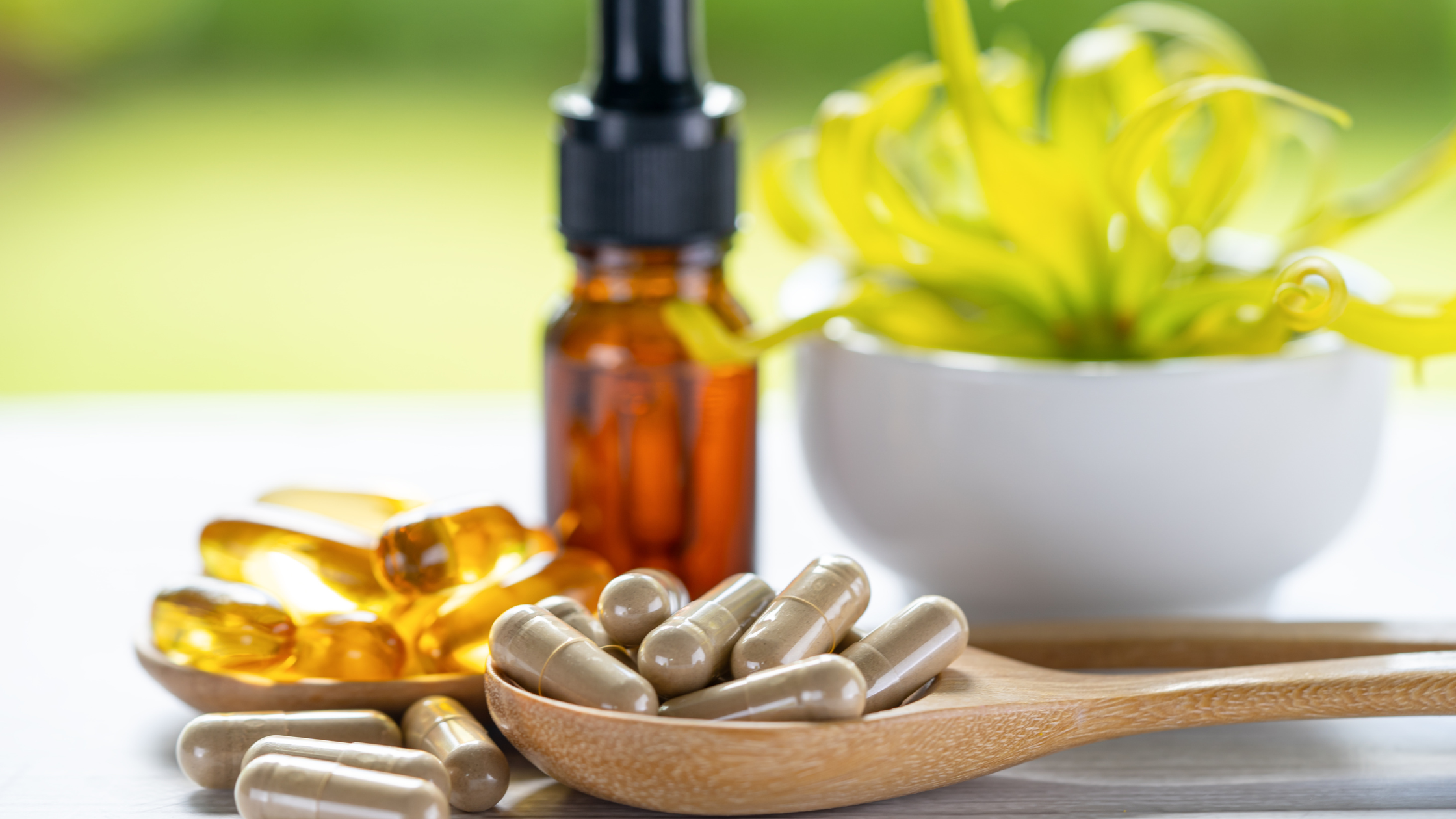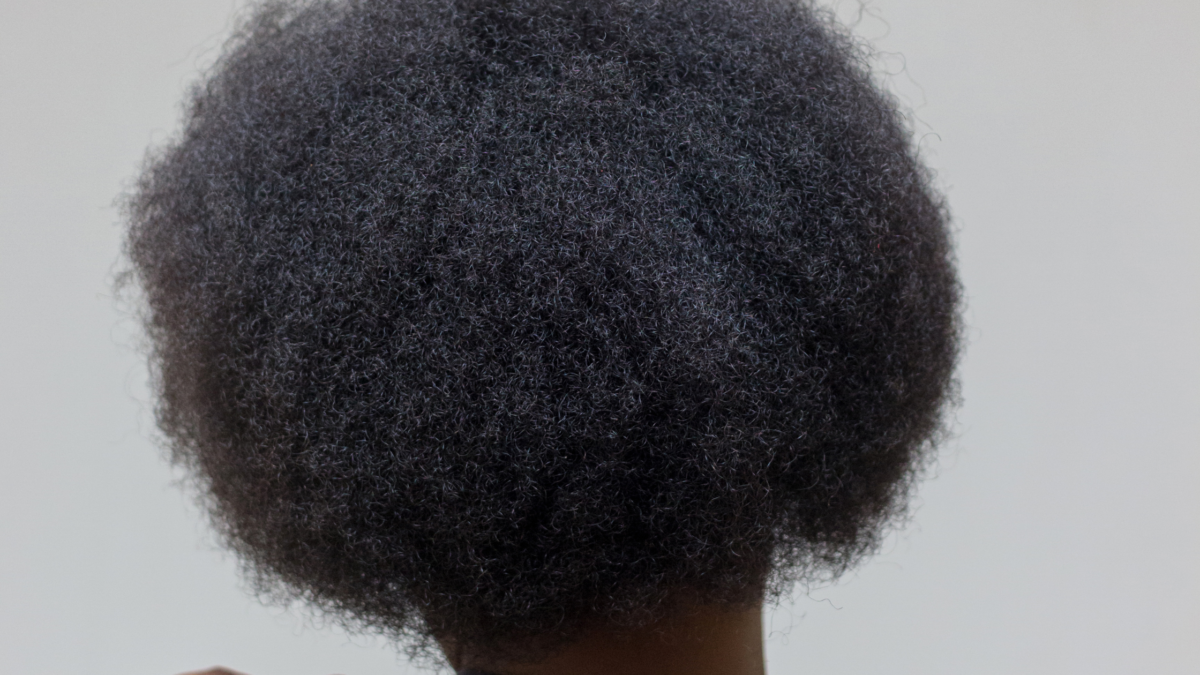


Medically Reviewed By Margaret Etudo. Written By The Vitamins For Woman Team.
You don’t need expensive treatments or chemical formulas to regrow hair. With the proper natural methods, supporting real, lasting hair regrowth is possible.

Hair loss can feel like a personal betrayal, one strand at a time, and your confidence might take a hit. But it doesn’t have to be permanent.
Many now turn to natural methods that nourish the scalp, improve circulation, and restore follicles without chemical medications.
Whether you’re experiencing thinning, breakage, or patchy baldness, understanding how to regrow hair naturally can be life-changing.
In this guide, you’ll learn twelve proven methods that target hair loss from its root causes and help restore growth naturally.
From essential oils to scalp massage, you’ll find a blend of techniques backed by tradition and science.
Hair loss can be distressing, but understanding why it happens is the first step toward regrowth.
Hair loss is rarely random. Most people experiencing hair fall deal with underlying triggers like genetics, hormonal shifts, or nutritional imbalances.
Genetic predisposition plays a leading role, especially in cases of androgenetic alopecia, the most common form of pattern baldness in men and women.
This type of hair loss is tied to the hormone DHT, which shrinks follicles over time.
Chronic stress is another hidden culprit, leading to a condition known as telogen effluvium. When the body is under pressure, it sends hair follicles into a resting phase, causing sudden shedding weeks later.
Nutritional deficiencies, especially in iron, zinc, biotin, and vitamin D, can also weaken hair shafts and stop new strands from forming.
If your diet lacks essential nutrients or your scalp isn’t getting enough oxygenated blood flow, hair growth slows or stalls entirely.
Hair doesn’t grow overnight, and understanding its natural rhythm helps you manage expectations during any regrowth journey.
The cycle consists of three main phases: anagen (growth), catagen (transition), and telogen (rest).
The anagen phase is where active growth happens and can last up to seven years.
The catagen phase marks a brief transition period, where the follicle shrinks and lasts for a few weeks.
The telogen phase is the resting stage, and after a few months, hair falls out and makes way for new growth.
About 90 per cent of your hair is in the anagen phase at any given time. When stress, illness, or hormonal imbalances interrupt this cycle, more strands enter the telogen phase prematurely, leading to noticeable hair loss.
Regrowing hair naturally means extending the anagen phase while addressing the issues that prematurely force hair into shedding.
Forget miracle pills; these holistic approaches target the root causes of hair loss and encourage your scalp to produce new growth naturally.
A consistent scalp massage does more than relax you. It stimulates the scalp, improves blood circulation, and enhances follicle nutrient delivery.
Regular massage helps stretch the hair follicle cells, which may promote thicker hair growth over time.
Studies have shown that just four minutes of daily massage over 24 weeks can improve hair thickness.
Using your fingertips, gently massage your scalp in circular motions, focusing on areas where hair feels thin or weak. This simple habit can increase follicle activity and support a healthy hair cycle.
If you’re looking for a natural replacement for minoxidil, rosemary oil might be your best option.
A study found that rosemary oil is as effective as 2% minoxidil in promoting hair regrowth after six months of consistent use.
Unlike minoxidil, rosemary oil has fewer side effects and supports scalp health. Apply it by mixing a few drops with a carrier oil such as jojoba or coconut oil.
Massage the mixture into your scalp and leave it on for at least 30 minutes before rinsing. Using rosemary oil consistently improves circulation and helps reduce DHT levels on the scalp, making it a powerful natural hair growth booster.
Aloe vera has long been used in traditional remedies for its healing and anti-inflammatory properties.
When applied to the scalp, aloe soothes irritation reduces dandruff, and helps unclog hair follicles that may be blocked by excess oil or buildup.
Its enzymatic activity promotes a healthier scalp environment, essential for hair regrowth.
Fresh aloe gel can be applied directly to the scalp and left on for 20–30 minutes before washing it with a mild shampoo.
Used regularly, it helps create the ideal conditions for hair to grow stronger and fuller.
Although not the most pleasant-smelling treatment, onion juice has shown impressive results in studies on natural hair regrowth.
Rich in sulfur, it boosts collagen production and improves blood flow to the scalp.
In one clinical trial, participants who used onion juice twice daily saw significant regrowth within six weeks, particularly in patchy alopecia.
To use it, blend a fresh onion, strain the juice, and apply it to your scalp for 15–30 minutes before washing it thoroughly.
Over time, it can strengthen hair strands and reactivate dormant follicles.
Coconut oil doesn’t just moisturize; it penetrates the hair shaft better than most oils, reducing protein loss and preventing breakage.
It also has antibacterial properties that protect the scalp from fungal infections and other conditions contributing to hair thinning.
Use it as a pre-wash treatment by warming the oil and massaging it into your scalp. Leave it on for 30 minutes or overnight before shampooing.
Regular use conditions the scalp to strengthen the roots, creating a better hair growth environment.
Green tea contains polyphenols and antioxidants that may help prevent hair loss and stimulate new growth.
The key compound, EGCG, has been shown in animal studies to support hair follicle growth and reduce hair thinning.
Applying cooled, brewed green tea directly to the scalp and leaving it on for 10–15 minutes may help nourish the follicles.
Drinking two to three cups a day also supports overall scalp health from within by reducing inflammation and oxidative stress.
Known for its cooling sensation and fresh scent, peppermint oil does more than awaken your senses.
When diluted and applied to the scalp, it enhances circulation and helps move hair follicles into the anagen phase.
A study found that peppermint oil outperformed minoxidil in promoting hair growth in mice.
To use it safely, mix a few drops with a carrier oil and massage into the scalp several times a week. Its stimulating properties can help reawaken sluggish follicles.
Saw palmetto is a botanical DHT blocker, making it a popular natural alternative to synthetic hair loss treatments.
DHT is the hormone responsible for shrinking follicles in pattern baldness. Saw palmetto extract may slow this process by inhibiting the enzyme 5-alpha-reductase, which converts testosterone into DHT.
You can find it in supplement form or topical products. Used regularly, it may reduce shedding and make hair grow thicker and stronger.
Hair is made of keratin, a protein that requires amino acids, vitamins, and minerals to build and grow.
A diet rich in whole foods, especially leafy greens, lean protein, nuts, seeds, and fruits, supports the body’s growth of strong, resilient hair. Prioritized nutrients include biotin, iron, zinc, and vitamin D.
Hydration is just as crucial as dehydrated hair follicles struggle to function optimally. Drinking enough water and eating water-rich foods help transport nutrients to the scalp and keep your hair soft and flexible.
Chronic stress triggers hormonal changes that can lead to excessive shedding. High cortisol levels can push hair into the telogen phase prematurely, resulting in thinning across the scalp.
Learning to manage stress effectively is essential for long-term hair health. Practices such as yoga, deep breathing, daily walks, journaling, or even talking to a therapist can lower stress levels and restore hormonal balance.
A calmer body is better equipped to focus on regeneration rather than survival, allowing hair to grow naturally.
The way you treat your hair daily influences its ability to grow. Over-styling, tight ponytails, and frequent heat exposure can cause mechanical damage, leading to breakage.
Switching to a loose hairstyle, using a silk pillowcase, and air-drying your hair can minimize this risk. Use wide-tooth combs instead of brushes and avoid aggressive towel drying.
These small shifts in your routine reduce unnecessary tension on the hair shaft and allow new strands to grow without interference.
Hair regeneration happens most effectively during sleep. Your circadian rhythm controls hormone production, cellular repair, and follicle activity.
Poor sleep quality or irregular patterns can throw off these natural processes. Prioritize 7–9 hours of quality rest each night in a dark, quiet environment.
Supplementing with melatonin may also support hair growth, as research shows it extends the anagen phase of the hair cycle.
Restoring your sleep schedule might be the most straightforward yet powerful step in your hair regrowth plan.
Pairing the right treatments with reliable products can enhance results and accelerate regrowth.
Essential oils like rosemary, peppermint, and lavender are potent plant-based solutions for stimulating growth and restoring scalp balance.
Jojoba oil acts as a carrier while mimicking natural sebum, helping restore hydration without clogging pores.
Castor oil, especially the cold-pressed variety, is high in ricinoleic acid, which boosts circulation.
Pumpkin seed oil is another underrated option; it supports hair density by acting as a natural DHT inhibitor.
Products that combine these ingredients in a balanced formula offer multi-layered support for your scalp and follicles.
Nutritional supplements can help close the gap when your diet falls short. Biotin supports keratin production and is essential for strong hair structure.
Saw palmetto aids in blocking DHT to prevent follicle shrinkage. Zinc, vitamin E, and iron also play key roles in hair formation.
A supplement blend targeted toward women’s hair health can offer a complete nutrient profile in a convenient dose.
Many people successfully regrow hair using natural methods such as essential oils, scalp massage, and nutrient-rich supplements. While minoxidil works for some, alternatives like rosemary oil, saw palmetto, and aloe vera have shown comparable results without side effects.
Scalp massage can be done daily, ideally for 4–5 minutes. Consistency is more important than intensity. During massage, an oil like rosemary or peppermint can boost circulation even more and deliver nutrients directly to the follicles.
The fastest natural method tends to be a combination approach: daily scalp massage with rosemary oil, a nutrient-dense diet, and consistent use of proven supplements like biotin and saw palmetto. This trio addresses circulation, nutrient supply, and hormone balance, which are the core elements of natural hair regrowth.
Regrowing your hair naturally doesn’t require magic. It requires a method. You can awaken dormant follicles and support healthy regrowth by treating the scalp gently, feeding your body the proper nutrients, and choosing time-tested natural treatments like rosemary oil and saw palmetto. Patience is key, but the results can be honest and lasting.
Whether your hair loss is due to stress, hormones, or lifestyle habits, the journey to regrowth starts with consistency and care. You’re not just reviving hair; you’re rebuilding confidence from the inside out. Start with one method, build your routine, and trust the process.

medically reviewed by margaret etudo, BPharm. written by the vitamins for woman team.